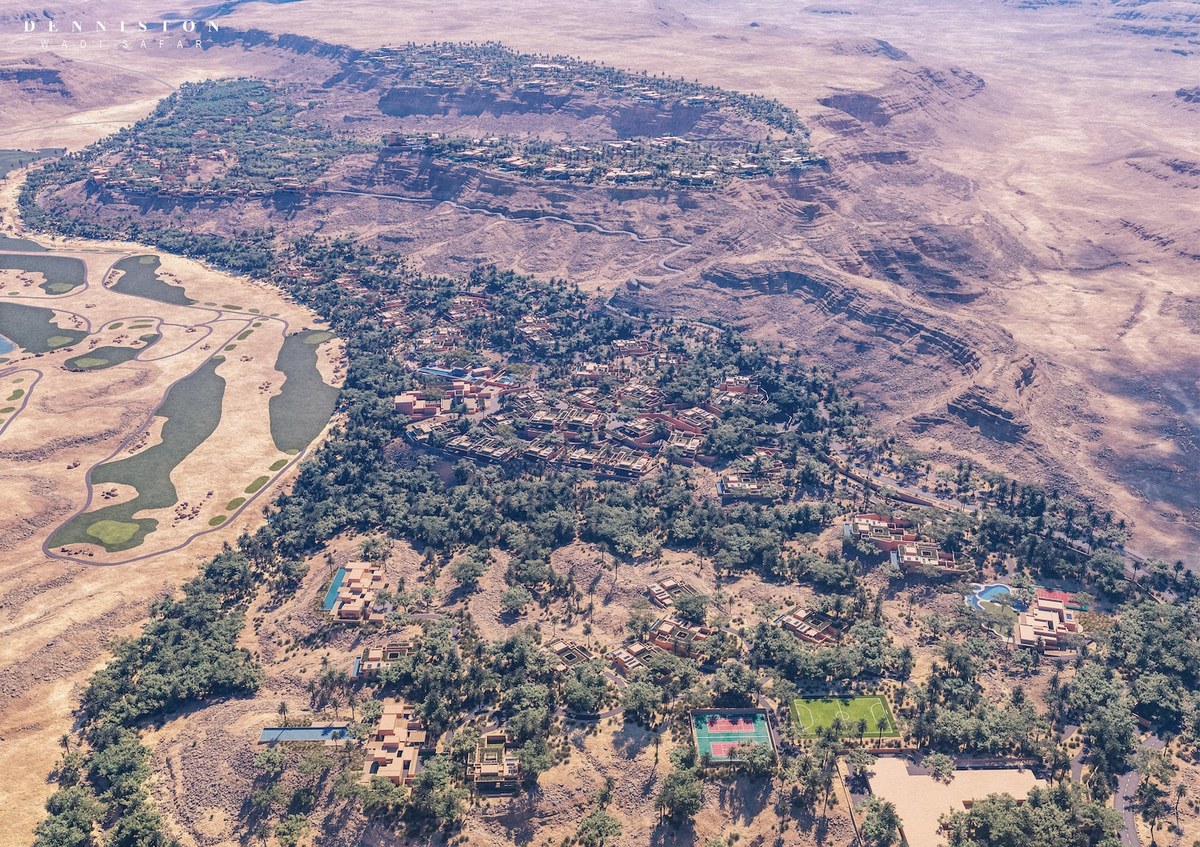LONDON: One of the world’s most exclusive hotel groups is launching in Saudi Arabia — another step in the transformation of the Kingdom’s luxury hospitality industry.
The group, Aman, has legions of celebrity fans — from Kim Kardashian to Kylie Jenner, Justin Bieber to Ivanka Trump, Ariana Grande to Brad Pitt — who pay thousands of dollars a night to stay in one of their stunning properties, which include 15th-century forts, frescoed Venetian palazzos, jungle hideaways, unspoiled islands and clifftop resorts.

Aman’s Wadi Safar has already begun to take shape amid the enchanting desert landscapes and lush orchards that crown the hills and mountains around Riyadh. (Supplied)
After a visit to the company’s legendarily discreet resort hidden down a nondescript road in the Utah desert, Kanye West, in (another) burst of Twitter enthusiasm, even declared the need to “Amangiri the world.”
Saudi Arabia’s deserts, cities and mesmerizing coastlines will soon play host to not one but five Aman hotels, including two under its recently launched wellness brand, Janu.
And the brand’s maiden venture into the Gulf region is about more than merely expanding the empire. For CEO Vladislav Doronin, it marks a return to a land that captured his heart with its rich heritage, vibrant culture and legendary hospitality.

Aman CEO Vladislav Doronin. (Supplied)
In a rare interview, the 61-year-old said he had felt a profound sense of renewal when he visited the Kingdom.
“I have travelled extensively all my life, but arriving in Saudi Arabia I was amazed by the landscape, the culture, and the heritage of the Kingdom,” he told Arab News. “I wanted to ensure we could bring this pioneering experience to our Aman guests, who enjoy the opportunity to discover new locations and be immersed in the nature and heritage of a place.
“In Saudi Arabia, we will create journeys for our guests. Our property in Riyadh celebrates the capital’s urban culture, while our project alongside the UNESCO Heritage Site of Hegra and our tented camp in AlUla offer a deeper exploration of the Kingdom.”
Aman’s Wadi Safar has already begun to take shape amid the enchanting desert landscapes and lush orchards that crown the hills and mountains around Riyadh. The sprawling resort will feature 78 meticulously designed rooms, a collection of bespoke villas, four exclusive farms, elegantly appointed lodges, a state-of-the-art clubhouse, restaurants, several swimming pools and a spa house, all spread over an expansive area of nearly two million square meters. Each element is intended to blend seamlessly with the surrounding terrain.
Anticipation is also building for the debut of Aman’s new tented camp in AlUla, the brand’s 10th property adjacent to or within a UNESCO Heritage Site.
Locations are only part of the Aman experience, however. Its real secret weapon is its staff — or “Aman Ninjas” as repeat visitors affectionately call them. Every time you leave your room, even for a short while, the Aman Ninjas silently sweep in, tidying up, organizing your belongings, even leaving behind thoughtful and bespoke gifts on your pillow. The kitchens, too, are always open to cater to guests’ requests.
Doronin explained that Aman maintains a staff-to-guest ratio of 6:1 to deliver its trademark service — something that’s near unheard of in the industry — and focuses on hiring locals who bring deep knowledge and authentic hospitality.
“Our service approach is hyper-personalized. Our teams are trained to understand each client as an individual and learn to predict their needs before they have even realized themselves,” he said. “This … will remain our standard in Saudi Arabia, and we look forward to welcoming the local teams in Saudi Arabia to the wider family.”
According to Doronin, the company believes its hotels will attract not only local visitors, but also international clients who “love to experience other cultures.”
Doronin concluded: “We bring unique DNA to each of our locations, from the dynamic center of New York City to the remote destination of Bhutan, and now to Saudi Arabia. Our clients are hooked by this irresistible combination, so they choose to stay with us time and again.
“Now that the Kingdom is more open, very welcoming to visitors and encouraging tourism, we are confident that our guests will thoroughly enjoy discovering all that this amazing country has to offer.”











